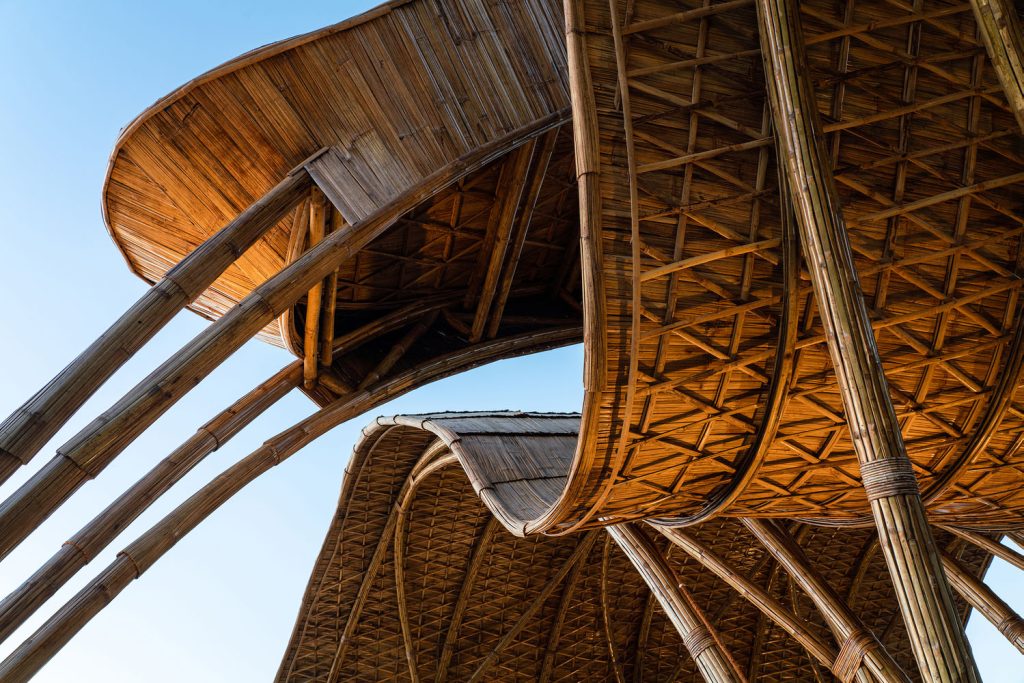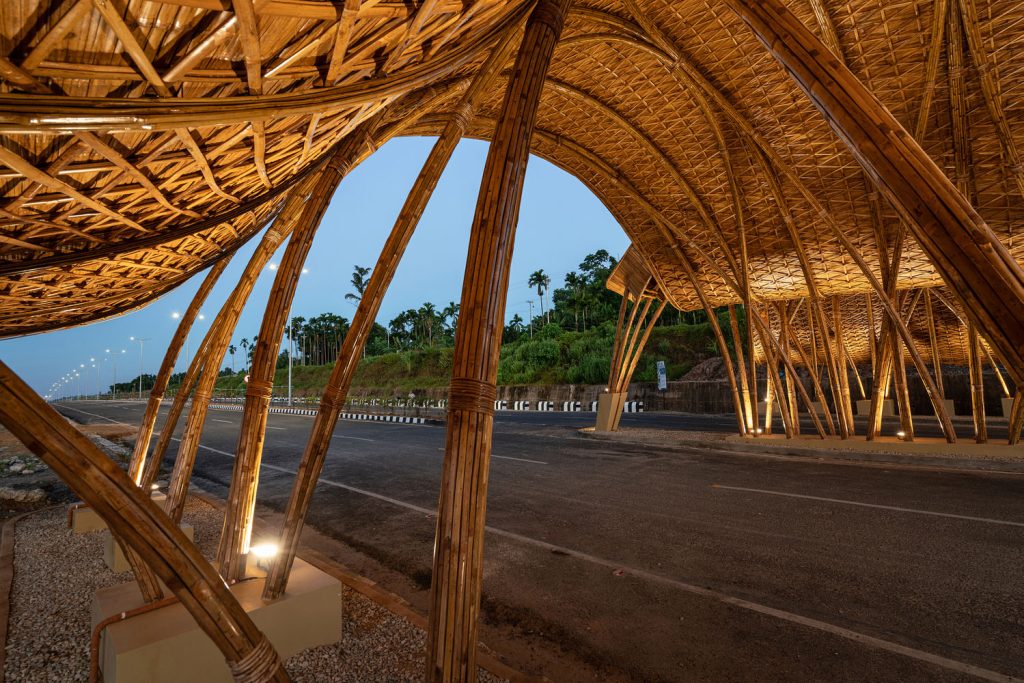The geographical tapestry of Arunachal Pradesh is located in the northeast of India and is home to an architectural masterpiece known as The Great Hornbill Gate. Crafted by STUDIOARO, this awe-inspiring structure is the Great Hornbill, serving as the iconic entry gate to the new Donyi Polo Airport. In its artistic allure, the gate symbolizes a harmonious bridge connecting the region’s deeply rooted cultures and traditions with the ever-evolving modern world.
Beyond its cultural wealth, Arunachal Pradesh features the distinction of being a well-known biodiversity hotspot. Thousands of species, both fauna and flora, find sanctuary in this region, with many being endemic. The significance of bamboo in the local culture is profound, and Arunachal Pradesh boasts numerous species of bamboo and cane. Traditional homes still stand proudly constructed from bamboo, an integral part of everyday life.
The Great Hornbill Gate is a testament to the profound connection between nature and culture. Its design, mirroring the double-headed Great Hornbill, spans the entry and exit roads with 26 interlocking arches. This architectural marvel covers an expansive 2500 sq ft, reaching a height of 25 feet and a width of 38 feet on each side. The Indian media rightfully hails it as the largest public structure in the country crafted from natural materials.
Aroty Panyang, the lead architect and a native of Arunachal Pradesh, expresses profound pride in contributing to this landmark project. The endeavor to design and build the airport gate presented an exciting opportunity for STUDIOARO. Drawing inspiration from the flight of birds, especially the Great Hornbill, the state bird of Arunachal Pradesh, the design encapsulates the bird’s distinctive features, form, and majestic wingspan. Moreover, constructing this colossal structure using bamboo and cane speaks to a larger mission – revitalizing traditional materials in the face of a global shift toward modern-day construction materials like concrete and steel.
The journey from conceptualization to completion was not without its challenges. The monsoons, synonymous with heavy rainfall in Arunachal Pradesh, posed a formidable obstacle. Yet, strategic planning became the linchpin of overcoming this hurdle. Prefabricating parts of the structure offsite in a covered location ensured systematic and timely production, ultimately resulting in the gate’s completion five months ahead of schedule. The installation process, requiring the expertise of 15 bamboo artisans, unfolded over a span of five months.
The gate, crafted entirely from the finest bamboo and cane sourced from the region, undergoes a meticulous process. Only four-year-old bamboo, specifically Bambusa tulda (jati bamboo) for roofing and Bambusa balloon (taluka) for arches and the main structure, is harvested. Treatment and preservation with non-toxic salts like borax and boric acid powder ensure longevity, extending the structure’s lifespan by several decades. Incorporating a rainwater harvesting system and a long-term landscape plan exemplifies a commitment to holistic and sustainable infrastructure development. The airport’s surroundings, adorned with an organic roof structure, move away from the rigid geometries of straight lines and angles, creating an immediate connection with onlookers.
In the broader context of modern architecture, where bamboo increasingly earns acclaim for its structural qualities and sustainability, STUDIOARO’s project stands out as a beacon. While the use of bamboo has been dominant in Southeast Asia and South America, this landmark structure places India at the forefront of the global movement towards sustainable architecture.
As the Great Hornbill Gate welcomes travelers to the Donyi Polo Airport, it stands not just as an architectural marvel but a testament to sustainable design’s potential to weave tradition with modernity seamlessly. In its wings, stretched across time and space, the gate tells a story of pride, resilience, and a commitment to a sustainable future.
Project Info
Architects: STUDIOARO
Area: 2500 ft²
Year: 2022
Lead Architects: Aroty Panyang
Country: India
Photographs: Shahul Shibili























Leave a comment